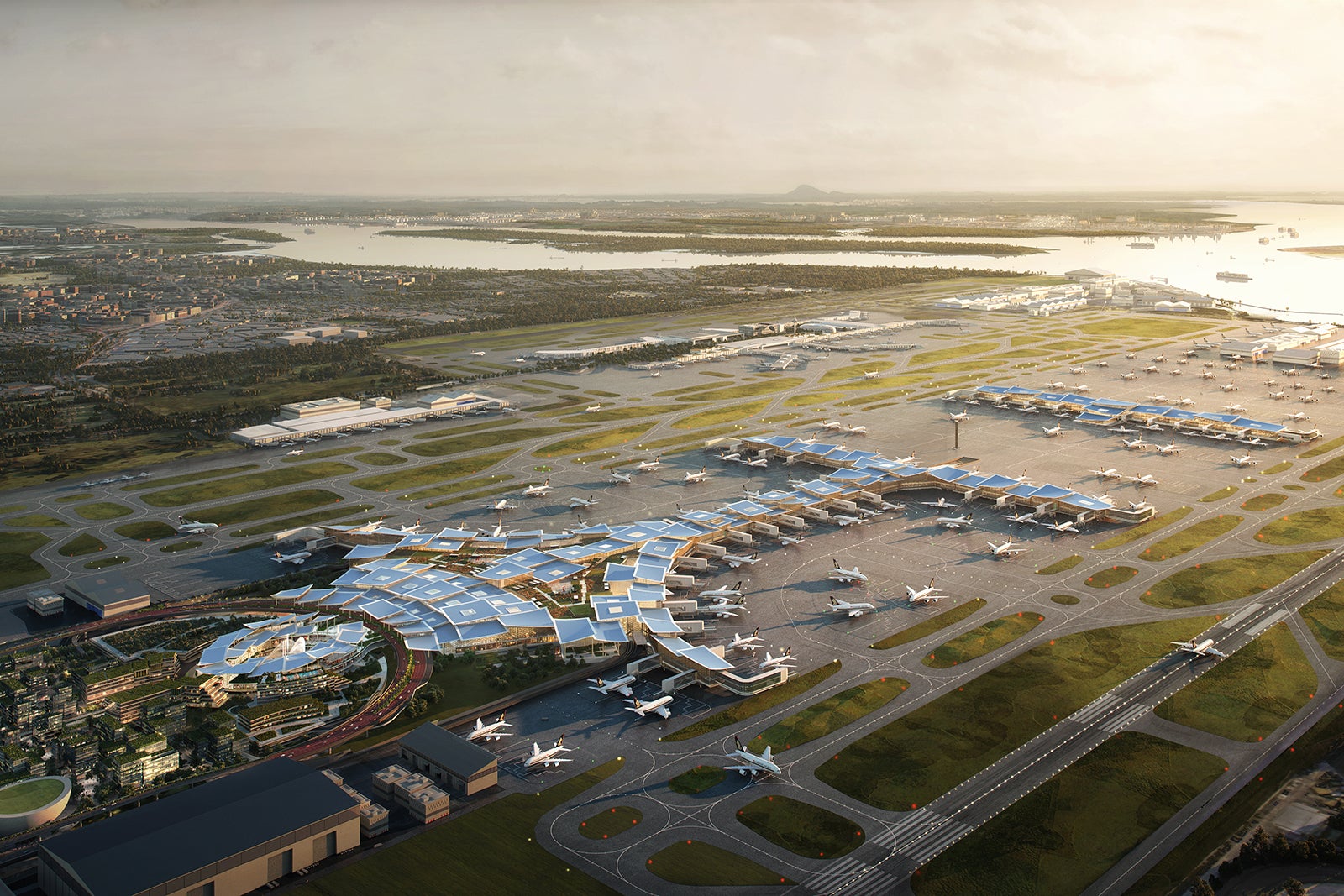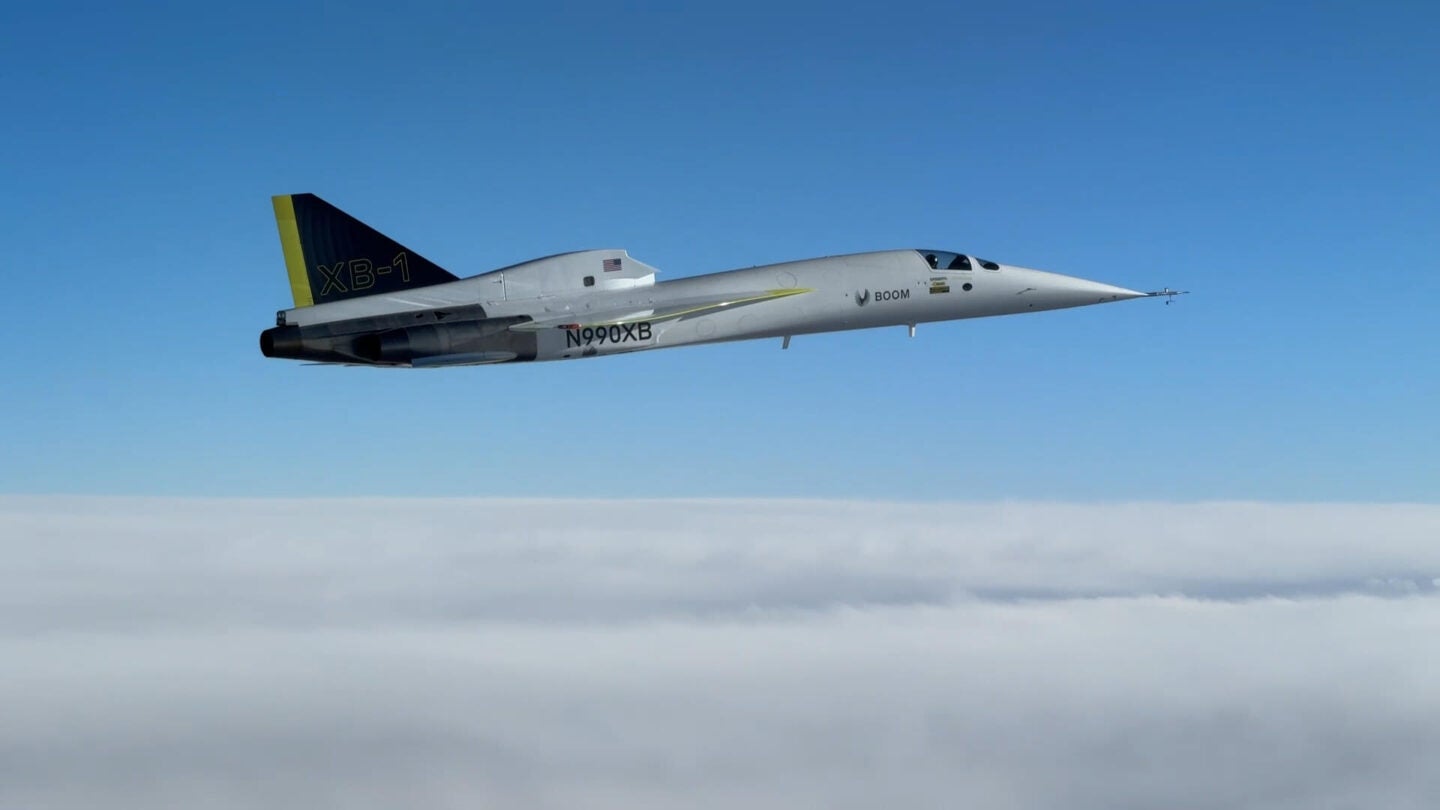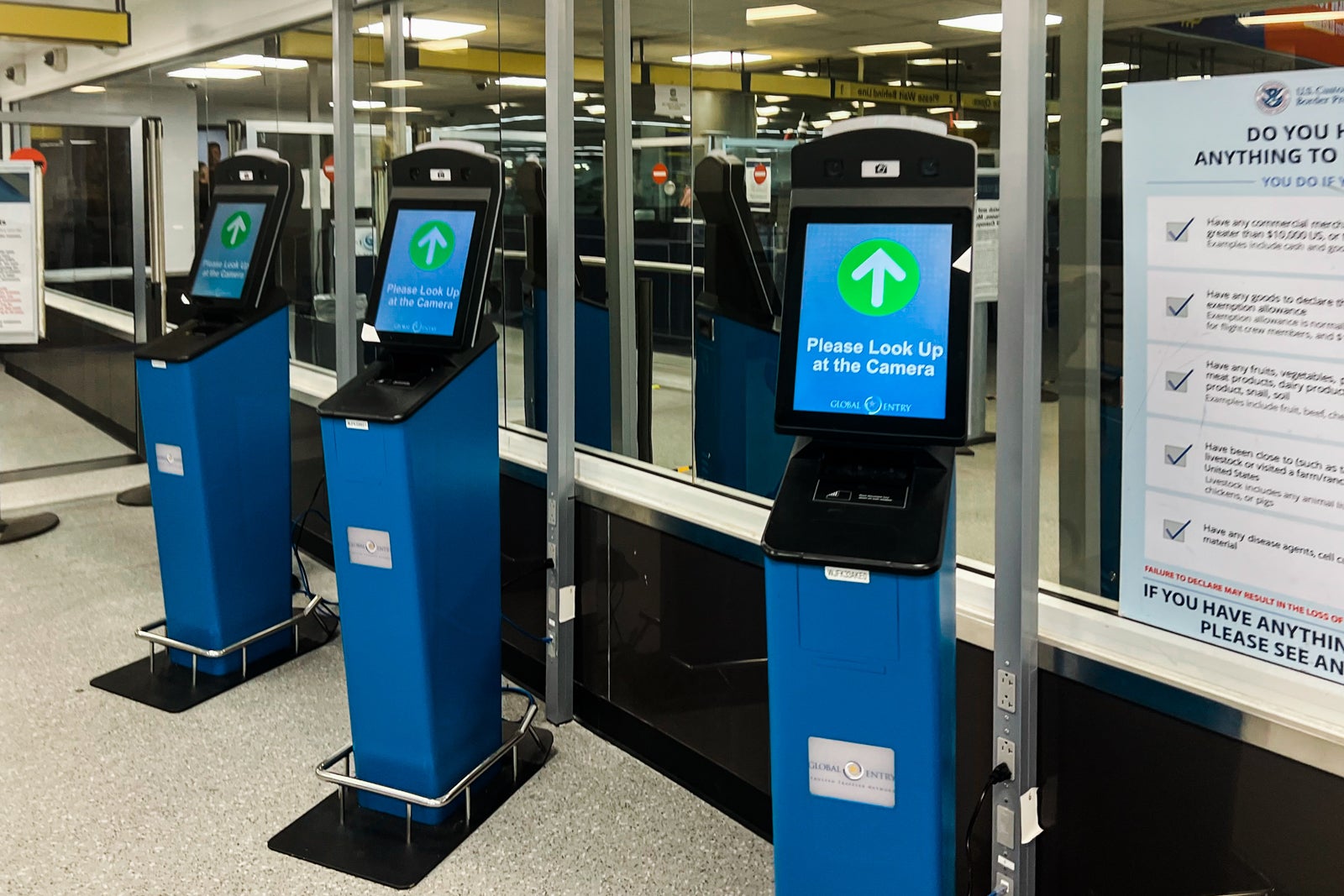Fifteen years ago, the idea of booking a trip entirely on your smartphone and then uploading all your memories to social media felt cutting-edge, if not impossible. Yet today, you can pass through security with a quick face scan, board the plane with a tap of your wrist and pay for your trip entirely with points earned from limited-time sign-up bonuses.
As The Points Guy celebrates its 15th anniversary, we’re looking ahead into the next 15 years. What could the next decade and a half look like for travel?
Well, we aren’t oracles, but we do spend our days thinking about travel. Here are some of the boldest and most likely innovations shaping the future of how we fly, stay and explore.
Airport of the future
Today’s airport experience is filled with long lines, overcrowded airport lounges, lackluster dining options and outdated infrastructure. Yes, there are some airport gems nowadays across the country — but by and large, the airport experience is ripe for disruption.
By 2040, I’d expect a major change in how we clear security and board the plane. While Clear and TSA PreCheck already integrate facial recognition technology, these security initiatives are still facilitated by agents staffing desks and machines.
Going forward, I wouldn’t be surprised to see facial recognition and perhaps even gait analysis help automate the identity verification process. Better yet, your face (or fingerprint) could simply become your boarding pass — no need to even check in for your flight and present a 2D barcode across the travel journey.
Another part of the airport experience that’s ripe for disruption is checked baggage. Right now, there’s limited tracking available when you hand over your bag to the airline. Even for those who travel with AirTags, you still only get a high-level glimpse of where your bag is.
As airport baggage systems become even more digitalized, I expect a far more seamless bag-checking process. The tags themselves could have built-in Bluetooth and RFID technology that allows you (and the airline) to monitor your bag’s progress in real time. And if the bag gets misplaced, reuniting with it will certainly be much faster and easier.
These days, we’re already seeing robots parading around airport lounges to clean up trash and tidy the dishes. I’d expect far more robot assistants cropping up in the coming years, many of which will likely handle automated rebooking processes when things go wrong.

Daily Newsletter
Reward your inbox with the TPG Daily newsletter
Join over 700,000 readers for breaking news, in-depth guides and exclusive deals from TPG’s experts
These robots might even deliver snacks to your gate and help address customers in foreign languages.
In the air
Once it’s time to board the plane, it’s looking increasingly likely that you might just be stepping onto a supersonic jet once again.
If Boom Supersonic has its way, commercial flights at speeds faster than sound are just around the corner. This isn’t necessarily a new innovation — after all, the now-retired Concorde offered supersonic flights — but it’s one that’ll likely be democratized by 2040.
Getting to the airport could also be ready for disruption. Instead of taking an Uber, eVTOLs — or electric vertical takeoff and landing aircraft — might be shuttling flyers to and from major airports and transit hubs.
The eVTOL concept, popularized by companies like Ancher and Joby Aviation, is designed to reduce congestion and cut commuting times. Some travel observers are still skeptical of this concept, but major airlines have made big investments in this space. So, I guess we’ll have to see.
Finally, as more and more travel providers look for more environmentally friendly ways to fly, airlines have been investing significantly in sustainable aviation fuel (SAF). While this technology is only just getting started, we’ll likely see big investments in SAF and other new inventions that we haven’t even heard of yet, all designed to decarbonize.
Loyalty gets (even) more personal
We’re already starting to see loyalty programs move from a one-size-fits-all model to more personalized rewards structures — and we’re probably going to see a lot more of that by 2040.
As machine learning and AI become even more advanced, loyalty programs will be able to tailor offers to your behavior, such as bonus points for flying to your favorite destinations or targeted upgrades during specific travel periods.
Furthermore, I’d expect the utility of points to become even greater. Thanks to tech advancements, I wouldn’t be surprised if by 2040, you could redeem your SkyMiles (or other points currencies) at national retailers, on Amazon and more.
Better yet, we’ll probably also see many more advancements in redemption tools. Right now, Point.me and Seats.aero are popular tech-focused picks for travelers looking to maximize their redemptions, but I’m sure there will be dozens more advanced tools coming to market by 2040.
Hotel room reinvented
The hotel room is ripe for disruption. Imagine walking in — entirely bypassing the front desk — and your room automatically customizing the lighting, climate control and music to your preferences.
Perhaps that experience could be unlocked simply by swiping your room key, or just by talking or showing your face.
We’ll probably also see the introduction of more modular, pop-up-style hotels in the coming years. This trend might be fueled by people’s desire to explore the latest “it” destination, where existing hotels don’t have the capacity to host all the demand.
Borderless exploration
If there’s one aspect of travel that’s still stuck in the 2000s, it’s border control and immigration. Even though programs like Global Entry have invested heavily in smoothing the arrivals process for members, the entire experience of entering (or returning to) a country can be time-consuming and costly.
Related: 15 places you need a visa or ETA to travel to with an American passport
Yes, there will probably still be stringent visa requirements and customs officers at the border — but the concept of needing physical passports and visas to travel will likely be a thing of the past by 2040. Digital identity systems will almost certainly be commonplace by then, allowing you to pack one less thing when it’s time to travel.
I’d also imagine that foreign travel will be easier with the introduction of real-time translation software built into AR and VR goggles and digital display boards throughout your travels.
The rise of purposeful travel
Perhaps the biggest shift we’ll see isn’t technological; it might just be philosophical.
As travel becomes more commoditized, we’re already starting to see the rise of purposeful travel — travel is becoming less about the vacation and more about the connection. As such, I’d expect to see many more trips focused on building community and visiting ecological sites.
That’s especially true as virtual reality tourism comes into play. We’ve already started to get an early glimpse of what that might look like via VR goggles from companies like Apple and Meta. If you put these goggles on, you can already immerse yourself in places like the Sagrada Familia and Big Ben without waiting in line.
These tools will mean that when it’s time to hit the road, people will likely try to explore off-the-beaten-path sites more than the super popular ones today.
Another use case for these VR goggles is the ability to do a “try-before-you-travel” experience. This allows travelers to get a glimpse of what they will see on the ground, and helps them customize their tours and itineraries to meet their needs well before they even take off.
Bottom line
While the next 15 years will likely bring even bigger technological leaps than the past 15 years, the core values of travel will likely remain the same. People will still seek adventure, connection and discovery.
It’s just the way they go about getting those experiences will change — airports will be revolutionized, the planes you fly to your destination may look different, your hotel room might recognize you. The list just keeps going on.
One thing is for certain, though: as travel trends emerge, you can count on TPG to bring you the latest updates as they happen.
Related reading:




